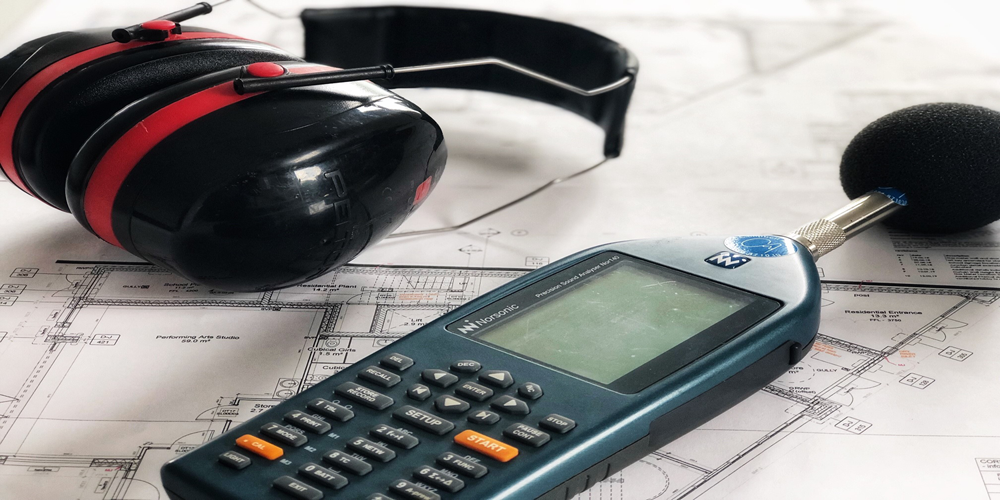
Minimising Noise Transference
Sound Testing to Minimising Noise Transference
There are many different types of intrusive sounds that can penetrate through external walls, party walls, and separating floors. And these are a major concern for the inhabitants and users of both residential and commercial buildings.
In many existing buildings, where noise is a problem, any noise reduction is welcomed, giving comfort and relief by improving the quality of the living space. In residential building conversions, alterations must be designed to minimise the risk of disturbance from external noise sources from both neighbouring properties or from outside noise sources via the building façade.
Defining Noise
There are many ways to define noise; usually, it’s any unwanted, unpleasant or unexpected loud sound’. Most people will be disturbed by any unexpected loud noise, but many are able to become accustomed and de-sensitised to constant background noises as long as these do not vary in pitch or become too loud or intense. A couple of examples of this are residents living under an airport flight path or adjacent to a railway line.
Noise usually originates from outside the building envelope, via sound sources such as traffic, horns, alarms, and sirens, however, noise can also be generated from within buildings via household activities such as televisions, radios and washing machines or badly maintained mechanical plant. Equipment such as old central heating boilers and air conditioning units can generate significant whine and hum acoustics which can be very upsetting to certain ‘sensitive’ people and can greatly affect the person/s wellbeing. The preferred background (ambient) noise level in dwellings is 35dB. This is very often reduced to 30dB for sleeping areas as this is seen as the most sensitive area within a dwelling.
The subsequent noise intensity is measured in decibel (dB) units and uses a logarithmic scale. A 10dB increase in noise is normally perceived as a ‘doubling’ in loudness. The table below gives the typical decibel level of some example sound sources.
| SOUND LEVEL (dB) | DESCRIPTION | SOURCE EXAMPLE |
| 10 20 40-50 50-60 70 80 | Very faint Quiet Normal Noisy Loud Very loud | Normal breathing Whisper at 1.0 metre Light traffic at 50 metres Loud speech Busy street, pub or restaurant Vacuum cleaner or hairdryer |
Improving Sound Insulation
In order to consider the options for tackling noise problems, it is necessary to have a basic understanding of sound behaviour and acoustic design.
In most instances, the weakest acoustic area of the external walls will be window units. In existing buildings, these are often Sash units and many councils do want them replaced as they are one of the most important features within the external façade of existing buildings.
As a result, many councils/local authorities will not let you remove and replace original window units unless the frames are rotten and beyond reasonable repair, however despite this decent acoustic improvements can still be made by installing a draught-proofing strip to the opening lights, and by providing an acoustic caulk seal around the window frame.
If it’s extremely noise secondary glazing units can be installed along with demountable shutters. One of the simplest improvements can be made via the installation of good quality heavy curtains fixed close to the wall; this can also be one of the most attractive upgrades and can also help keep heat within the home – a double winner!
If the building is being subdivided into new apartments then the walls between apartments will need to be sound tested in line with Part E for Converted Dwellings. In this instance, we can undertake sample sound testing on walls and floors to check the existing sound insulation performance.
APT Sound Testing has considerable experience in all matters related to architectural acoustic design and detailing. We can help develop the initial acoustic design from the initial design scheme stage right through to the pre-completion sound testing.
Our approach is robust and does not leave any room for errors using our In-depth knowledge of acoustic materials, construction systems, and Regulations we can provide the following:
- Sample sound testing to identify the acoustic performance of the existing building to allow for targeted acoustic upgrades.
- Acoustic testing of existing wall façades to ISO 140-5, to check the existing sound levels so new targeted wall upgrades can be specified.
- Provision of cost-effective and practical acoustic solutions
- Thorough understanding of the desired character of the space
- Specification of External Building Fabric and including walls, doors and windows in order to minimise noise break-in, or break-out for privacy and overall acoustic quality
If you would like more information in regards to acoustic design or sound testing on your project, please contact us now at: info@aptsoundtesting.co.uk or call us direct on 01525 303905.